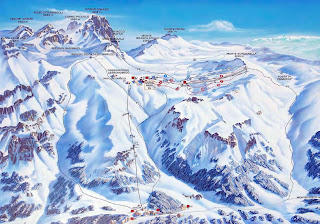Il Gran Sasso d’Italia
Nell'Italia centrale il massiccio del Gran Sasso è il gruppo montuoso più importante e suggestivo della catena degli Appennini. Con i suoi 2912 m. di altezza sul Corno Grande, è il monte più alto e facilmente raggiungibile grazie ad un percorso di circa tre ore che, al seguito di guide alpine esperte, porta alla vetta sulla quale, in un giorno senza nubi all'orizzonte, You can see both the Tyrrhenian Sea to the Adriatic. It stands majestic and gigantic like a huge boulder emerged from the bowels of the earth, made of solid rock and solid, a wall between the two seas that generates strong currents between the hot and cold air, causing high winds in winter and sudden showers summer.
The Gran Sasso massif covers about 40 km. , Between the provinces of L'Aquila, Teramo and Pescara. There are three major chains: the double ridge that stretches between Lake Campotosto and the plateau of Campo Imperatore, the Group of Corno Grande and Corno Piccolo and the ridge north of Campo Imperatore.
The first dorsal originates at Capannelle Pass, continues in the peaks of Mount S. Franco (2132 meters) of M. Jenco (2208 m.) and the Pizzo di Camarda (2332 m.), followed by the Rocky Ridge and culminates with the Malecoste Cefalone Peak (2553 m.). The complex of Corno Grande rises in the north of Monte Portella, including plans and Campo Imperatore Campo Pericoli. Aspect of the Dolomites, culminating with the summit of Corno Grande and Corno Piccolo (2613 m.), Gran Sasso has two characteristics: that of Paretone which is the highest cliff of the Apennines and the Calderone glacier, which is the southern Europe.
Flora and Fauna of the Gran Sasso
The steep walls of the Gran Sasso, on the side of Campo Imperatore, are devoid of vegetation, while on the Teramo side, at lower altitudes, are covered by mixed forests of beech trees and extensive.
Regarding the fauna, some years it has been reintroduced the Abruzzo chamois, easily visible to Campo Pericoli, while on the rocks of Pizzo Cefalone you can see the golden eagle, buzzard and sparrowhawk. At lower altitudes we find the wolf and small mammals, mid-sized carnivores typical of the rest of the Apennines.
